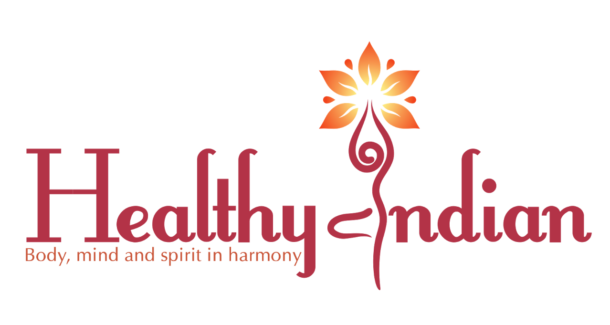In one of my yoga classes recently I mentioned doshas – the Ayurveda path to define characters, imbalances and diseases. Doshas are the physiological constitution of an individual controlled by the contribution of universal elements – earth, water, fire, air and ether – and their related properties. They are the blue prints for health and fulfillment. The three doshas – Vata, Pitta and Kapha– are basic body characteristics and the tendency of these body types to have specific strengths and weaknesses. Normally one dosha predominates in a person and this preponderance of one over others in our nature (Prakruthi) establishes our natural body type and determines our strengths and weaknesses. However, there may be influences from other doshas. Each of us is born with a genetically determined prakruti which is controlled by the contributions at the time of the birth. The acquired deviation from the prakruthi by lifestyles is called Vikruthi. If the proportion of doshas in one’s current state is close to the birth constitution, then health will be vibrant. A divergence between these states, however, indicates a state of imbalance. Each dosha has several differentiating qualities or ‘gunas‘ and each has a specific location (seat), as well as a corresponding chakras. Vata means ‘wind’. Pitta means ‘bile’. Kapha means ‘mucous or phlegm’. When any one of these becomes excessive in any particular area, it is then considered to be in a state of imbalance. Once established at birth, our body types do not change. The slings and arrows of life do not often permit us to remain in that state and we frequently find ourselves out-of-balance.
I continued the practice on that day with focus on the role of yoga to balance doshas and how specific yoga poses optimize them. At the end of the class a participant came to me and said, “I liked the whole class and the sequence. But, I do not still have any clue on doshas and their controls on my life”. As a yoga instructor, I am sure, you have been in this situation.
I changed my style. I stick with, “there are two kinds of personalities, one find it very hard to relax and others find hard to act on anything” (and, of course, there is one in between). It would be safe for us to deliver sequences to address both these identities in a class, and the third will be addressed consequentially. ‘Swadhyaya‘ – to teach thyself is very relevant in yoga. Recognize who you are, your strengths, weaknesses and imperfections and tailor yoga to fit you. In yoga, one size won’t fit all. Everybody doesn’t need to strive for a perfect headstand or savasana. Shift the focus on poses to fit your nature, and nurture that balance yoga warrants.
I am going to talk only about the vata dosha here. The contributions for this dosha comes from air and space. It provides the motion necessary for the physical, mental and emotional processes. It is called ‘a dosha that moves’. Individuals with predominance of this dosha tend to be fast in their action and thinking but lack the stamina for prolonged activity. Individuals with a vata dominant body type tend to be thin and active. Restlessness, hyperactivity, curiosity, and creativity mark the vata-dominant personality, as do rapid, chaotic speech and frequent changes of mind.
Vata is the leader of other doshas and is located in the colon. Vata corresponds with the throat chakra. Vata’s most important function is to control the central nervous system. Vata people tend to have restless minds with weak memories. They are likely to be artistic and creative with a good imagination, they will sometimes overindulge in pleasures. They are often fearful, worry too much and become anxious. They like to question things, spend a lot of time theorizing and then tend to over-analyze situations. Vata people often become dissatisfied with friendships and are unable to sustain them. When out of balance, vatas feel over-amped and ungrounded, and may suffer from mental and physical restlessness, insomnia, or anxiety. Vata energy can be very uneven, marked by spurts of frenetic activity followed by exhaustion. This dosha can get aggravated by dry, cold, and windy weather, over-stimulating environments, travel, lack of routine, and a lot of change. One can ground (earth) and soothe (water) excess vata by bringing the mother principle into your life — learning how to calm and nurture yourself, quieting down, keeping warm and moist, and establishing self-care boundaries and a supportive routine.
Yoga adds stability to vata. Poses that work on the colon, intestines, pelvis, lumbar spine, and sacroiliac balance vata by bringing energy back down into the base of the torso. Spinal twists and inversions of all kinds soothe this dosha. Sitting and standing forward bends are choice poses. Boat, plank, staff, and plow are also powerful vata-reducers to control anxiety and stress. To support grounding, work with standing poses such as mountain, triangle, warrior, and tree.
To make a vinyasa more vata-pacifying, move deliberately and slowly, extending the length of time that you hold each pose. Also pay attention to the transitions between poses, performing them with conscious awareness rather than rushing on to the next pose. Calming and grounding yoga sequences are ideal for them. Traditionally, yoga poses that work on the lower abdominal areas are suggested to balance this dosha.
Now I understand why yoga visionaries incorporated these yoga poses at the end of yoga practice. They calm you down into meditative and contemplative final stages of yoga practice. These poses increase the metabolism and digestion and increase the amount of tryptophan produced in the body. Tryptophan is the raw material for serotonin, which in turn acts as the building block for melatonin which calms one down. So, anybody seeking yoga to calm them down and relax may be looking at these ‘vata salutations’.



